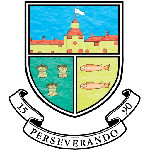Core Maths
| Mr S Robinson (Head of Team) | srobinson@conyers.org.uk | Mr J Downs | jdowns@conyers.org.uk |
| Mr K Anderson | kanderson@conyers.org.uk | Mrs K Gray | kgray@conyers.org.uk |
| Miss L Allanson | lallanson@conyers.org.uk | Mr M Black | mblack@conyers.org.uk |
| Mr P Dixon | pdixon@conyers.org.uk | Mr A Pach | apach@conyers.org.uk |
| Mr M Taylor | mtaylor@conyers.org.uk | Mx A Taylor | ataylor@conyers.org.uk |
| Mrs J White | jwhite@conyers.org.uk |
Key Stage 5 Curriculum Map
Curriculum Intent
To strengthen students’ maths skills and their ability to apply them to support other numerate A-levels, such as psychology, biology, chemistry, physics, geography, business, accounting and economics while developing an understanding of how mathematical thinking can help in real life scenarios involving financial maths among other areas.
Key Knowledge and Skills
Use a range of mathematical methods and techniques reflected in higher tier GCSE mathematics to find solutions to mathematical and non-mathematical problems.
Understand a further set of more challenging mathematical concepts and techniques drawn from beyond GCSE which are relevant within technical, professional and/or academic contexts.
Use a variety of mathematical and statistical approaches to represent and analyse relatively well-defined situations, including complex and unfamiliar situations. This includes identifying and understanding quantifiable information and related assumptions in that situation, using mathematical and statistical representations and techniques appropriately, and deriving new information to draw meaningful conclusions about the situation.
Generate and apply mathematical solutions to non-routine questions and problems: interpret new situations in terms of mathematical and quantitative characteristics; make judgements about strategies and methods to achieve a solution; take creative approaches where appropriate; and test and evaluate answers and conclusions.
Sequence Discussion
The qualification is assessed by 2 examinations held at the end of the summer term, the first of which focuses on the core content which is common across all 3 options. We have chosen to study the ‘Statistical Methods’ option and the second paper contains content relating to this in addition to some core content. The bulk of teaching in the first half of the year relates to the core content as it builds directly from GCSE content such as percentages, handling data and interpreting graphs and tables. In this section core concepts of financial maths are introduced, again largely due to their reliance on understanding key GCSE topics. The second half of the year sees focus switch from these relatively well established topics into new topics including the statistical methods option.
Year 12
Half Term 1
Percentages
Taxation – Tax and NI
Numerical Calculations
Fermi Estimation
Representing data numerically
Representing data diagrammatically
Half Term 2
Interest rates (Simple/compound interest, AER)
Equation of a straight line
Types of data
Collecting and sampling data
Solving financial problems (CPI, RPI, Currency exchange rates and inflation)
Introduction to spreadsheets
Half Term 3
Statistical techniques – correlation and regression
Analyse critically
Surface area and similarity
Graphical representation
Repayments and credit (student loans and mortgages, APR)
Half Term 4
(preliminary material issued Mar 01)
Identification and preparation for assessment using preliminary material
Representing data diagrammatically
Representing data numerically
Introducing the normal distribution
Taxation (VAT)
Limits of accuracy
Half Term 5
Identification and preparation for assessment using preliminary material
Statistical techniques (Probability and estimation) – calculating confidence intervals of a normally distributed population)
Similarity and Pythagoras’ Theorem.
Perimeter, circumference and area.

